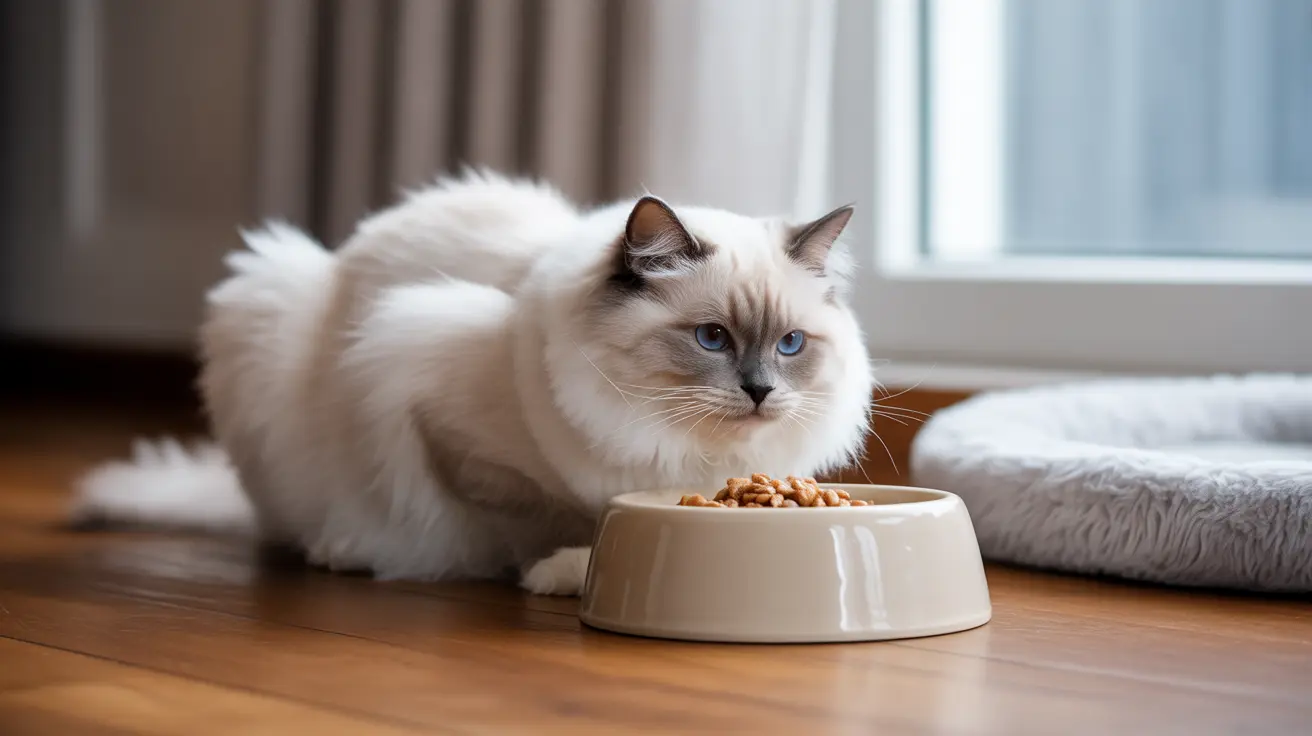Understanding Elevated Cat Bowls and Vomiting
If you're a cat owner dealing with frequent feline vomiting, you've likely encountered recommendations for elevated cat bowls. These specially designed feeding stations have gained popularity as a potential solution for cats who frequently regurgitate their food, but do they actually work?
In this comprehensive guide, we'll explore the science behind elevated cat bowls, their potential benefits, and what research tells us about their effectiveness in reducing cat vomiting. We'll also help you understand when these bowls might be helpful and when you need to seek veterinary care instead.
How Elevated Cat Bowls Work
Elevated cat bowls are designed to create a more natural eating position for cats. By raising the food bowl to chest level, these bowls aim to promote better posture during feeding and help gravity assist with food movement through the digestive tract.
The design typically features:
- A raised platform that brings food to your cat's chest level
- Sometimes an angled surface to further assist with food flow
- Ergonomic positioning to reduce neck strain
- Non-slip bases for stability during feeding
Benefits of Elevated Feeding Stations
While scientific evidence remains limited, many cat owners report several advantages to using elevated bowls:
- Improved digestion through better positioning
- Reduced strain on joints and muscles
- Decreased mess around feeding areas
- Better posture while eating
- Potential reduction in regurgitation for some cats
When Elevated Bowls May Help
Elevated cat bowls might be particularly beneficial for:
- Senior cats with arthritis or mobility issues
- Cats who tend to eat too quickly
- Cats with diagnosed esophageal conditions
- Large breed cats who strain to reach floor-level bowls
Important Considerations Before Switching
Before investing in an elevated cat bowl, consider these factors:
- Your cat's size and height (bowl elevation should match their chest level)
- The underlying cause of vomiting
- Your veterinarian's recommendations
- Your cat's current eating habits and preferences
Alternative Solutions for Cat Vomiting
Elevated bowls aren't the only solution for frequent cat vomiting. Consider these alternatives:
- Slow-feed bowls to prevent rapid eating
- Puzzle feeders for portion control
- Multiple small meals throughout the day
- Diet modifications recommended by your vet
When to Seek Veterinary Care
While elevated bowls might help with minor feeding issues, certain symptoms warrant immediate veterinary attention:
- Frequent vomiting (more than once per week)
- Blood in vomit
- Weight loss
- Changes in appetite or behavior
- Lethargy or depression
Frequently Asked Questions
Do elevated cat bowls actually reduce vomiting or regurgitation in cats?
While some cats show improvement with elevated bowls, scientific evidence is limited. Success varies by individual cat and the underlying cause of vomiting. These bowls may help most with regurgitation due to eating position rather than medical causes.
How should I choose the right height and angle for an anti-vomiting cat bowl?
Select a bowl height that aligns with your cat's lower chest when standing. The bowl should allow them to eat without stretching up or bending down significantly. If using an angled bowl, start with a slight tilt and adjust based on your cat's comfort.
Can elevated bowls help older or arthritic cats eat more comfortably?
Yes, elevated bowls can significantly benefit senior cats and those with arthritis by reducing strain on joints and muscles during feeding. This improved comfort may indirectly help with digestion and reduce regurgitation.
What are the signs that vomiting is caused by a medical issue rather than bowl height?
Medical issues typically present with additional symptoms like weight loss, changes in appetite, lethargy, or diarrhea. Vomiting that occurs well after meals or is frequent despite bowl adjustments should be evaluated by a veterinarian.
Are slow feeders or puzzle feeders more effective than elevated bowls for reducing vomiting?
For cats who vomit due to eating too quickly, slow feeders or puzzle feeders may be more effective than elevated bowls alone. Some cats benefit from combining both solutions - an elevated slow feeder can address multiple contributing factors.






